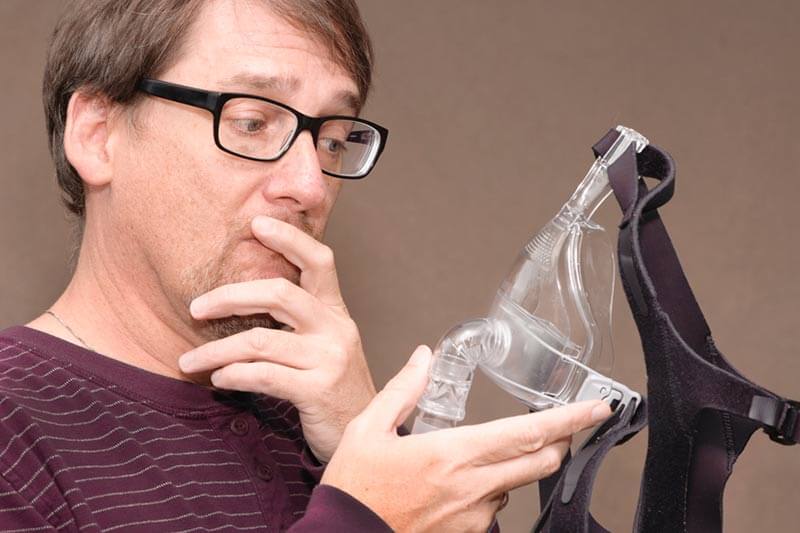In order to ensure the best possible results from your CPAP therapy, your new CPAP mask has to provide uninterrupted functionality, comfort, and ease of use. Your CPAP mask should allow you as much freedom as possible while contacting your face with a soft and comfortable cushion and fabric straps and leaving no red marks all over your skin. On top of that, you have to be able to put it on and take it off without any hardships.
Today, we are giving you some useful tips on how to put your CPAP mask on the right way for ultimate comfort and prevention of air leakages. This guide is applicable to most of the top-quality CPAP masks out there.

CPAP Mask Instructions
Nasal CPAP masks and nasal pillows are pretty straightforward when it comes to putting them on your face. Full-face masks, on the other hand, can be a bit challenging, so we’ll focus primarily on this type of CPAP interface.
First of all, you should loosen your headgear to a large setting before putting your mask on. If it features headgear clips, you should disconnect them at this time. Now, you should press the mask against your face and it should fit straight on if you’ve picked the right size and shape. Most of the commercially available masks have a certain degree of cushioning designed to provide an additional level of comfort. You should position your nose over the nostril opening and not into it.
Pull the headgear over your head while holding the cushion in place against your face. Push the cushion up into position so that the large opening sits right over your mouth with the top of the cushion located under your nose. This is also the time to press your headgear clips into place if your mask has them. The crown strap is extremely important in ensuring a proper seal. Putting the tab over the top of your head will reduce leaks around your nose.
Start pulling back on the tabs to adjust the side straps. The headgear should provide you with a loose and comfortable fit. Note that tighter is not better. This is a common mistake CPAP beginners often fall prey to. All that’s left to do now is connect the provided flexible tubing to your CPAP or bi-level device and go to sleep.